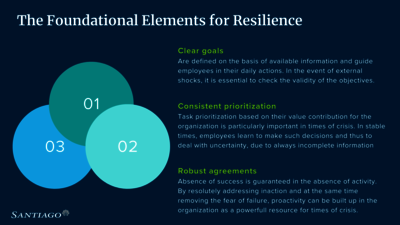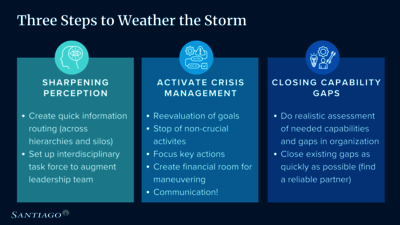As we step into 2024, many embark on the journey of New Year's resolutions. In Germany, popular resolutions include "saving more money" (51%), "exercising more" (48%), and "eating healthier" (46%)1. However, studies reveal that most people abandon their resolutions by mid-February, with "Quitters Day" on January 12 marking the peak2.
The recurrence of falling back into old patterns isn't limited to personal spheres but echoes in organizations, where established processes and agreements often falter, especially in times of crisis. For example, an organization has developed, adopted, and communicated a new leadership and collaboration model as part of a cultural transformation. After the first signs of an unexpected shock to normal operation (e.g. due to a war, a pandemic, or key leadership role change), both leaders and employees fall back into old patterns of behavior. Trust and empowerment quickly disappear, innovative strength declines and looking at the situation is enough to realize how it all stayed the same. There was a lack of depth in terms of anchoring, a lack of training and a lack of sustainability.
The only way to navigate unexpected turbulence professionally is to prepare before a storm is in sight. Depending on the company and field of activity, a wide variety of things need to be considered and guidelines such as ISO 22316 (Security and Resilience) or ISO 31000 (Risk Management) can provide valuable pointers on how organizations can equip themselves. In this article, however, we would like to take a closer look at the fundamental behaviors and agreements that form the interpersonal basis. These not only assist organizations in weathering storms but are also highly relevant managing periods of growth and commercial success. Consequently, this article emphasizes the importance of clear goals, consistent prioritization, and robust agreements as foundational elements for resilience. First, an explanation is given of the behaviors, agreements and processes that generally help dynamic organizations. This is followed by an exploration in what manner training and structural adjustment help to ensure the sustainability of the foundational elements.
The Foundational Elements for Resilience
Since organizations always operate in an ecosystem, their success is the result of an equation of perception of information, processing of information and the subsequent goal definition, prioritization, and finally implementation in interaction with the given ecosystem. While this is a deliberately chosen exaggeration there is a deal of truth in it and it is worth taking a closer look at it.
While the business is running smoothly management has the chance to put effort into finding new ways to expand the organization in some way e.g. markets, target groups, business opportunities etc. This serves the organization in times of uncertainty and external shocks. In addition to the organization's existing, clear goals, additional ones emerge, which must be carefully selected on the basis of available information and made clear and transparent for the organization. Information flows about the environment, processes in the company, etc. must function perfectly for this.
In taking action to achieve the newly emerged goals organizations will have beneficial learning experiences, that help to overcome stagnation in general, and therefore enhance the resilience of the organization even more. There are two main reasons in organizations for stagnation and the learning experiences address both. These two reasons are fear and comfort. That is why learning experiences must be clearly highlighted and celebrated as such. They must not have the stale aftertaste of failure, some things just do not work out, and it is good to know about it. Besides the fear of failure, it is comfort that leads to stagnation. It is the experience that doing nothing has no consequences; this must not be accepted any more than the fear of failure. In practice, it can often be observed that companies try to counteract both with control measures, but ultimately create even more obstacles for themselves, as valuable resources are tied up by a flood of meetings and reporting formats instead of tackling the causes of the problem.
Not only do the activities provide fertile ground to internalize the two points addressed above, but they also offer an excellent opportunity to foster prioritization decisions at various levels of the organization with an imperfect information base. In prosperous times, these decisions can be facilitated and discussed by more experienced colleagues. The focus here is once again on building the competence to make decisions in the best possible alignment with the organization’s goals – asking the key question which option inherits the highest expected value for the organization – and fostering the courage to do so in the face of incomplete information (deciding under uncertainty).
If successful in practicing this during good times, crucial information flows without "fear filtering" become possible. Goals can be identified and translated into prioritization decisions for the respective work areas, all enriched by the innovative power emanating from each individual employee. This becomes particularly relevant at the moment of an external shock, signifying the need for adaptation in an organization. Activities must be quickly changed, terminated, or initiated anew. Swift decision-making and consistent action are crucial for the survival of organizations in a crisis, as exemplified by the widely noted adaptability at the onset of the COVID-19 crisis. At the crucial moment, widespread adoption of remote work was swiftly possible.




